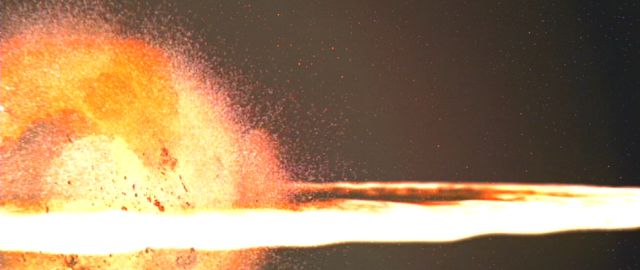Actually, Gambit, if you get enough photons together, you can do just about anything.

The size of a planet destroying laser would have to be several orders of magnitude larger than the target planet because of cooling limititations in space (it's a radiative process only, no conduction).
It's always a simple matter of putting more energy per second onto a target than the target can get rid of per second. The magnitude of that difference in energy input vs. output will determine what kind of response the target has.
This assumes that you have a laser system that large, and are able to focus it properly.

Some gas clouds in deep space have been found to lase. And these clouds are on a massive scale, so we know that the lasing process can occur over very large distances (solar system -sized).
This coming from your friendly high energy laser expert.

Particle beam weapons would be more productive, especially if you could accelerate anti-matter in the form of full up anti-atoms. Any charged particles won't work because of the interaction with a planet's magnetic field. Charged particles would be much easier to accelerate though.
Your weapon would be bathed in high energy gamma radiation though. You couldn't have personnel on it.
Better yet would be meta-stable forms of anti-matter. These forms of matter would have say, extra positrons in their positron shells (ionized form of the anti-atom), or even anti-muons taking the place of one or more positrons. There is such a thing as meta-stable hydrogen in the form of a hydrogen atom with a muon instead of an electron: this hydrogen has a much higher energy content.
One interesting aspect of this whole process is something I just thought of. Would the ionized gases created by vaporizing a planet cause the planet's magnetic field to balloon? There have been many experiments and a couple of proposed spacecraft engines that operate on the principle of creating a magnetic field and injecting a plasma in the field. This injected plasma adds to the field's strength and size (thus the "ballooning"). And without a planet to anchor the magnetic field of said planet, would the field just collapse? Or, more likely, would it spin off as coronal mass ejections do from the sun?
Interesting... One could build a PhD from the above and this discussion. Seriously.
